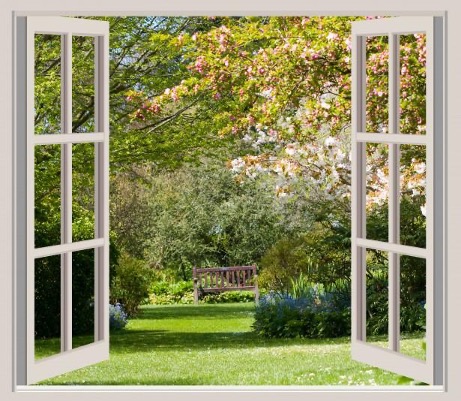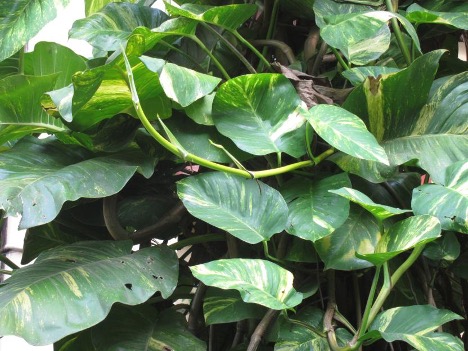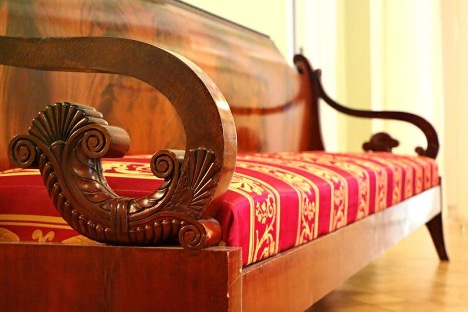You don’t have to leave your house to get back to nature. Try bringing the outside indoors.
Throughout history, people have lived in response to the natural world. Nature was all around us, and we were part of the environment. There were no clear-cut lines. But that changed with the industrial revolution.
Today, 90% of our habitat is the constructed environment. While we want a clean house, it’s the little things that make a house a home. Biophilia refers to our innate tendency to seek a connection with nature. Biophilic design seeks to restore this connection without turning back the clock. It does so by bringing more of the outdoors into our homes and our lives.
Proponents of biophilic design, like the late Stephen Kellert, said the approach allows you to design a habitat and not just a home. The Yale University ecologist earned kudos as one of the country’s all-time environmental leaders. Kellert aimed to improve home design as well as health and well-being, productivity, and our social connection.
Better Traffic Flow
Beauty alone can justify this increasingly popular design style. Consider the elements: increased natural light, prominent vegetation, the use of natural materials and natural shapes, and an emphasis on the easy traffic flow of space within your home and between the indoors and out.
The approach is a near-perfect match to modernist design principles and also offers a sumptuous counterpoint of the clean lines of modern homes. But you don’t have to own or build a textbook-worthy modernist gem to bring more of nature into your daily life. Here are a few pointers:
Light and Air
Skylights, large sunny windows, and glass doors are no-brainers when it comes to creating a more natural home. Doors and windows are also a trending home improvement in 2021, but placement can mean a lot.
Openings that allow shifting light to play across your rooms add interest and more perfectly echo the experience of being outside. Vistas bring the outside in by deliberately framing whatever natural features your property offers — from dramatic views to intimate slices of a garden that is just a step away.
Breezes, one of the joys of being outside, don’t have to stay beyond your walls. Windows that open and provide cross ventilation are good bets ecologically and also bring your inside life a bit closer to nature.
Promoting more natural light in your home is all about apertures. It can be as easy as eliminating drapes in some rooms or replacing heavy fabrics with light or translucent natural fibers.
In darker rooms, install lighting that can simulate natural light. This can be as simple as choosing broad-spectrum lights or as innovative as a lighting scheme that would mimic the varied forms of light and shadow in natural space.
Vegetation
Your windows and doors let you see the green world outside — more so if you plant with views in mind. But house plants are also critical to biophilic design.
The ultimate feature is a green wall or vertical garden. These can work anywhere — from bathroom to living room to hall. Green walls also harmonized beautifully with the natural building materials such as wood and stone favored by the biophilic aesthetic.
Potted plants can serve a variety of purposes. An array of fresh herbs on the kitchen window greens up both your décor and your menus.
A light-loving plant in a window without a beautiful vista can block out a less-than-stellar view. And few design elements can match the impact of a gorgeous tropical plant, such as the money tree plant with its braided trunk, broad showing leaves, and promise of good luck.
Common house plants such as peace lily, English ivy, and snake plant do double duty by improving your indoor air quality as they beautify. They replace pollutants in addition to carbon dioxide and, like all plants, keep up moisture and oxygen levels. This helps your indoor surroundings feel as fresh and clean as the outdoors they are designed to emulate.
Materials, Shape and Colors
Light, air, and plants constitute direct experiences of nature. The use of natural materials, shapes, and colors creates an indirect experience.
Natural wood is the much-preferred building materials, with natural stone considered another good option, particularly for bathrooms and kitchens. Man-made materials such as old bricks or antiques that show tarnish over time are also favored because they show the evidence of time.
Nature, of course, does not grow in straight lines. Curved architecture can be expensive. Curved accessories and appointments don’t have to be costly and can go a long way in softening the built environment with an organic feel. So can natural designs on wallpaper and upholstery — or images of nature in a picture on the wall.
When it comes to color, complement whatever natural materials you are able to use with soothing, neutral palettes inspired by sky, sea, plants, and earth. No matter their color, fabrics, and fibers should be natural. Opt for cotton, silk, bamboo, wool, and down. This is particularly important for fabrics that go next to your skin, such as towels and bedding Space.
Blend the Indoors and Outdoors
As great as light, air, plants, and natural materials can be in any home, their presence alone does not constitute a biophilic design. The deciding factor is continuity and integration.
Biophilic design creates a repeated and sustained experience of nature as you move from room to room and between indoors and out. Spaces that flow are preferred to discrete, cut-off rooms.
Elements such as outdoor showers and living rooms that melt into terraces reinforce the message that our modern, busy lives are part and parcel of the ongoing, natural world.
At its best, biophilic design heightens our emotional connection to our home by satisfying our inherent need to affiliate with nature. By creating beautiful spaces that are as soothing as they are energizing, biophilic design also fosters our ability to connect with one another and to take pleasure in that connection.
Put simply: Biophilic spaces are good spaces to be. May the forest be with you.
Cindy Mitchell is a home stager and lifestyle and landscape and home design writer. She is a social butterfly and loves to entertain guests at home with beautifully decorated spaces for any occasion.
For more resources on thoughtful design:
- Read other articles on our blog
- Browse our Her Home™ Magazine
- Thoughtful Design Concepts






